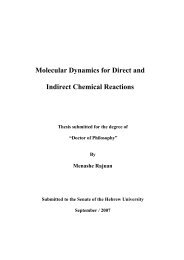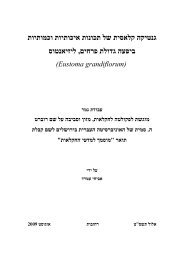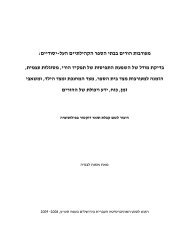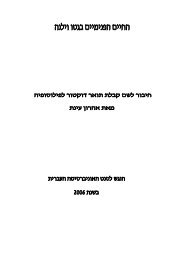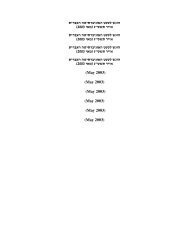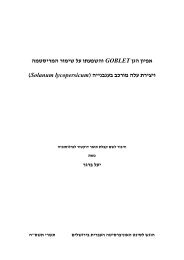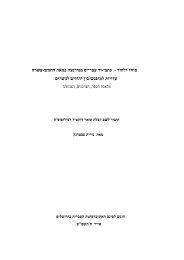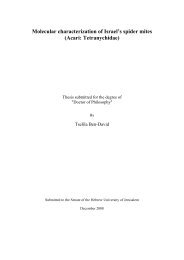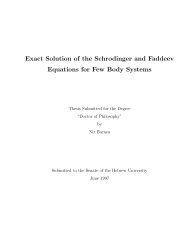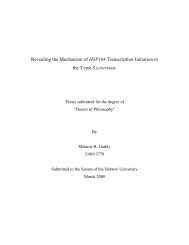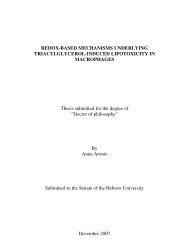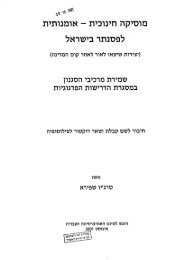The Autecology of Eudiaptomus cf drieschi (Poppe & Mrazek 1895 ...
The Autecology of Eudiaptomus cf drieschi (Poppe & Mrazek 1895 ...
The Autecology of Eudiaptomus cf drieschi (Poppe & Mrazek 1895 ...
Create successful ePaper yourself
Turn your PDF publications into a flip-book with our unique Google optimized e-Paper software.
duration <strong>of</strong> naupliar stages from copepodite stages, but a general trend in postembryonic<br />
development across the different temperatures was seen for all treatments. In<br />
many species, nauplii develop somewhat faster than copepodites, however it has been<br />
shown that at optimal temperature and food conditions, stage duration can be very<br />
similar (Fig. 15). <strong>The</strong> data show a very gradual increase in development time from NII<br />
through NV with a slight drop at NVI. Development time in copepodites is seen to<br />
increase, generally, from CI to CV.<br />
13%<br />
Stage Duration (%)<br />
11%<br />
9%<br />
7%<br />
5%<br />
NI NII NIII NIV NV NVI CI CII CIII CIV CV<br />
Stage<br />
Figure 15: Relative stage duration <strong>of</strong> E. <strong>drieschi</strong>.<br />
In Lake Kinneret, average yearly temperature ranges from 14 to 28.5 0 C. At optimal<br />
temperatures, (18-20 0 C) females can produce eggs within 24 hours <strong>of</strong> mating.<br />
Subsequent clutches are produced within 1-1.5 days (+ 0.45) at 18 0 C. Under low<br />
temperature conditions, females can take up to 2.5 days to produce eggs. At<br />
temperatures >23 0 C, females were not seen to produce eggs. E. <strong>drieschi</strong> is more<br />
commonly found in waters with temperatures that range from 7-22 0 C (Kiefer, 1968,<br />
Beeton 1981, Gunduz 1998). During the summer months when, water temperatures in<br />
the Kinneret can reach 30 0 C in the epilimnion E. <strong>drieschi</strong> is absent from the upper<br />
water column and if at all present, found only in the metalimnion (>10 m depth) where<br />
the temperature is less than 20 0 C.



